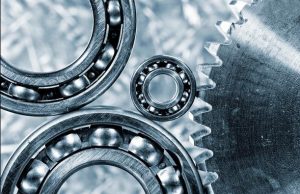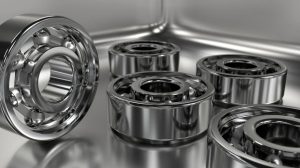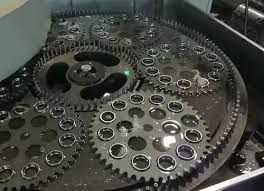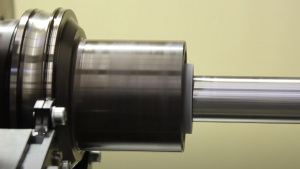How to high precision process bearing?
Bearing is an indispensable core component in mechanical and electronic equipment. Its main management function is to support the Chinese mechanical rotating body, reduce the influence coefficient of trade friction and ensure the rotation accuracy. Regardless of aircraft, cars, high-speed rail or high precision machine tools, all rotating parts generally need bearings.
When other parts produce a relativist movement between each other on the shaft, the parts used to maintain the central working position of the shaft and control the movement are called Chinese bearings. It can be directly used for the interaction of the rotating shaft rolling, so that the friction generated when the rotating shaft is reduced to the minimum.
The basic structure of bearings includes: inner ring, outer ring, rolling body (steel ball or roller), cage.


Heating in the forging:
Forging processing is the primary processing of bearing ring processing, also known as rough processing.
The main purpose of ring forging is:
(1) To obtain the blank with similar shape to the product, so as to improve the utilization rate of metal materials, save raw materials, reduce the amount of mechanical processing, reduce the cost.
(2) Eliminate the inherent defects of the metal, improve the metal structure, make the metal streamline distribution reasonable, the metal tightness is good, so as to improve the service life of the bearing.
The main purpose of bearing ring annealing :
Spheroidizing annealing of high carbon chromium bearing steel is to obtain the microstructure of fine, small, uniform and round carbide particles evenly distributed on the ferrite matrix, and to prepare for the microstructure of cold working and the final quenching and tempering. GCr15SiMn quenching basic process: in 790-810℃ insulation 2-6h, 10-30 ℃/h, cold to 600℃ below, out of air cooling.
Turning processing
Turning processing is semi-finished processing of bearing ring, which can also be said to be forming processing.
The main purpose of turning processing is:
(1) Make the processed ring completely the same shape as the final product.
(2) To create favorable conditions for the subsequent grinding.
Turning processing method:
Centralized process method: in one equipment to complete all turning process of small batch production.
Decentralized process: mass production of a certain turning process on one equipment.
Heat treatment
Heat treatment is the key process to improve the inner quality of bearings
The main purposes of heat treatment are:
(1) Through heat treatment to make the material structure change, improve the mechanical properties of the material.
(2) Improve the internal quality of bearings (wear resistance, strength and toughness), so as to improve the life of bearings.
For high carbon chromium bearing steel Gcr15SiMn, heat treatment includes quenching and low temperature tempering quenching: heating temperature: 820 — 840(℃), holding time: 1-2h cooling medium: oil, low temperature tempering: heating temperature: 150 — 180(℃), holding time: 2-5h cooling method: air cooling.
Grinding processing grinding processing is the bearing ring and roller processing in the final processing, known as the finished product processing.
The main purpose of grinding is:
(1) Make the size accuracy and shape accuracy of the ring meet the design requirements.
(2) Qualified rings shall be provided for bearing assembly.
Grinding processing method: generally, the method of dispersing process is used for processing, and a number of equipment can be connected to form a production line through the loading and unloading devices to improve production efficiency.
Moresuperhard provide completed solutions for bearing industry,including double disc diamond grinding wheel ,centerless diamond grinding wheel,internal diamond grinding wheel, etc…


—EDITOR: Doris Hu
—POST: Doris Hu






